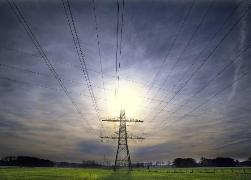Categories: Featured Articles » Interesting Facts
Number of views: 198829
Comments on the article: 24
5 unusual ways to produce electrical energy
 Where to get energy? It is no secret that sooner or later people will run out of oil, gas, coal, and even uranium, which are still left on the planet. A reasonable question arises: "What to do next?" Where to get energy? " After all, our whole life is based on the use of energy. It turns out that after the hydrocarbon reserves run out, the existence of civilization will end too?
Where to get energy? It is no secret that sooner or later people will run out of oil, gas, coal, and even uranium, which are still left on the planet. A reasonable question arises: "What to do next?" Where to get energy? " After all, our whole life is based on the use of energy. It turns out that after the hydrocarbon reserves run out, the existence of civilization will end too?
There is an exit! These are the so-called alternative energy sources. By the way, many of them are used, and successfully, already at present. The energy of wind, tides, the sun and geothermal sources ─ is successfully used and converted by people into electricity. But so to speak “Official alternative sources”.
Currently, there are hundreds of theories and developments on the creation and use of unusual alternative energy sources. The alternative energy sources described in this article are unusual only in the sense that they have not yet become popular, are not widely used, impractical, unprofitable, etc.
But this does not mean at all that they will not be able to be effectively applied, possibly in the very near future. After all, the same oil as an energy source has been known since ancient times, but only from the end of the industrial revolution, they were able to receive and process oil in a form suitable for use.
It is not known what we will use in the future for energy generation, but there are certainly alternatives to traditional energy sources, and it is quite possible that at least one of the methods listed below for generating electric energy can become widespread and popular.
Here are 5 unusual alternative energy sources that give rise to real hope for their effective use in the future:
Electricity production from salt water
The first experimental power plant to receive energy from salt water was created by Statkraft in Norway. A power plant uses a physical effect, osmosis, to produce electricity. Using this effect, as a result of mixing salt and fresh water, energy is extracted from the increasing entropy of liquids. then this energy is used to rotate the hydro turbine of the electric generator.
Fuel cells - generating electricity from fuel
Demonstrated fuel cell power plants with a solid oxide electrolyte with a capacity of up to 500 kW have been developed. In fact, the element is burning fuel and directly converting the released energy into electricity. It’s like a diesel generator, only without a diesel engine and generator. And also without smoke, noise, overheating and with much higher efficiency.
Thermogenerators - the conversion of thermal energy into electrical energy
To obtain electrical energy, a thermoelectric effect is used. This is a rather old technology, which has again become relevant in our time due to the massive use of energy-saving light sources and various portable power consumers. Industrial developments already exist and are being successfully used, for example, heating and cooking stoves, with built-in thermal generators, which in the course of their work make it possible to obtain not only heat, but also electricity.
Piezoelectric Generators - Using Kinetic Energy
Experimental installations have been created that allow you to receive electricity through the use of kinetic energy - pedestrian paths, turnstiles at railway stations, a special dance floor with piezoelectric generators built into it.There are ideas in the near future to create special "green gyms" in which a group of sports exercise bikes will be able, according to manufacturers, to generate up to 3.6 megawatts of renewable electricity per year.
Nanogenerators - use of vibrational energy
In this source of energy is a special nanogenerator that converts microoscillations in the human body into electrical energy. The device is quite the slightest vibration to generate an electric current that allows you to maintain the operability of mobile devices. Modern nanogenerators turn any movement and movement into a source of energy. Very promising and interesting options for the joint use of nanogenerators and solar panels.
What do you think about this? You may be aware of other new alternative sources of electricity. Share in the comments!
See also at e.imadeself.com
:
